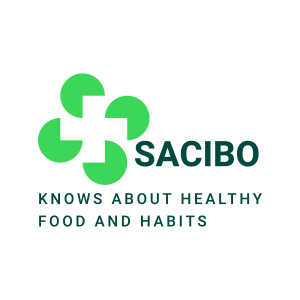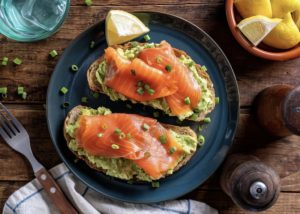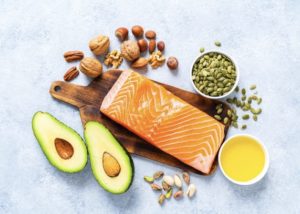- Home
- /
- Healthy Meal
- /
- Products
- /
- The Bread Dilemma: Friend...
- /
- The Bread Dilemma: Friend...
- 1. The Bread Basics
- 2. The Gluten Conundrum
- 3. The Sugar Surprise
- 4. Carb Confusion
- 5. The Sodium Situation
- 6. Artificial Additives
- 7. The Glycemic Index Debate
- 8. The Whole vs. Refined Grains Battle
- 9. Bread and Weight Gain
- 10. The Mediterranean Diet Paradigm
- 11. The Bread Alternatives
- 12. Bread in Moderation
- 13. The Bottom Line About Bread
Bread, a staple in diets worldwide for centuries, has undergone countless transformations, from simple flatbreads to intricate artisanal creations. Yet, in recent years, a cloud of doubt has hung over this dietary cornerstone. Is bread dangerous for our health? What hidden dangers exist beneath its seemingly innocuous exterior?
Few culinary creations are as universally cherished as bread. Its timeless appeal transcends cultures, serving as a symbol of sustenance, community, and comfort. Yet, in the ever-evolving landscape of nutrition and dietary trends, bread finds itself at the center of a dilemma. Is this beloved staple a friend to our health or a potential foe?
This comprehensive article embarks on a journey through the intricate world of bread, unraveling its complex relationship with our well-being. From the basics of bread to its impact on blood sugar, from the debate surrounding gluten to the science of grains, we will leave no slice unturned in our quest for clarity.
We’ll explore the Mediterranean diet’s timeless wisdom, discover the vast array of bread alternatives, and uncover the secrets of bread in moderation. Along the way, we’ll navigate the controversies, dive into the science, and offer practical insights to help you make informed choices about bread and your health.
Whether you’re a passionate bread enthusiast, a health-conscious individual, or someone seeking alternatives to this age-old staple, this article is your comprehensive guide to understanding the bread dilemma. Join us as we explore the nuances, dispel the myths, and ultimately empower you to enjoy bread in a manner that aligns with your unique dietary preferences and health goals. Welcome to the world of bread—let’s embark on this enlightening journey together.
1. The Bread Basics
Before we tackle the dangers, let’s understand the basics of bread. What goes into making that seemingly humble loaf? We’ll explore the various types of bread, from traditional whole-grain varieties to the more processed options, and the ingredients that go into each.
Bread, in its simplest form, is a marvel of human ingenuity—a harmonious blend of flour, water, yeast, and perhaps a pinch of salt. Yet, this seemingly straightforward creation can take on an astonishing array of shapes, sizes, and flavors. Before we delve into the potential health risks of bread, it’s crucial to understand the fundamentals that make bread such a global culinary icon.
1.1. The Origin of Bread
Bread’s history can be traced back millennia, with its origins deeply entwined in the dawn of agriculture. Early civilizations discovered that grinding grains into flour, mixing it with water, and exposing the mixture to the elements led to a miraculous transformation—the birth of bread through natural fermentation.
As civilizations evolved, so did their bread-making techniques. Ancient Egyptians perfected their art of bread baking, while the Greeks and Romans added diverse ingredients like olives, cheese, and herbs to enhance flavor. The Middle Ages saw the emergence of baker’s guilds and the refinement of bread production techniques.
1.2. Bread Varieties: A Global Mosaic
Today, the world of bread is a magnificent mosaic of traditions and flavors. From the unleavened flatbreads of the Middle East to the crusty baguettes of France, each culture has contributed its unique twist to this age-old staple.
White Bread
Perhaps the most ubiquitous, white bread is typically made from refined flour, stripped of its bran and germ, resulting in a soft, fluffy texture. It’s a canvas upon which countless sandwich creations are built.
Whole Grain Bread
Whole grain bread retains the entire grain, offering a wealth of nutrients and dietary fiber. It provides a nuttier flavor and denser texture, often with visible grainy specks.
Multigrain Bread
A hearty mix of various grains and seeds, multigrain bread packs a nutritional punch while adding complexity to taste and texture.
Sourdough Bread
Fermented with wild yeast and lactic acid bacteria, sourdough bread boasts a tangy flavor and chewy crust. It’s often considered a symbol of artisanal craftsmanship.
Rye Bread
A staple in Northern and Eastern Europe, rye bread features rye flour and sometimes wheat. It offers a robust flavor and a dense, moist crumb.
Flatbreads
From Indian naan to Mexican tortillas, flatbreads span the globe, serving as versatile accompaniments to a myriad of dishes.
Gluten-Free Bread
Crafted to cater to individuals with gluten sensitivities or celiac disease, gluten-free bread relies on alternative flours like rice, corn, or chickpea to achieve its texture.
1.3. The Ingredients That Matter
Bread’s composition is deceptively simple, with flour, water, yeast (or leavening agents), and salt serving as the primary ingredients. The magic, however, resides in the art of balance. Flour provides structure and substance, water activates gluten formation, yeast ferments to create carbon dioxide bubbles, and salt enhances flavor and controls yeast activity.
1.4. The Power of Leavening
Leavening agents are the catalysts for bread’s rise. While traditional yeast is a common choice, other leavening agents like baking powder or baking soda can create chemical reactions that yield the characteristic fluffiness found in quick breads and biscuits.
1.5. Bread: More Than Meets the Eye
Though bread’s essence may appear simple, its influence on human culture, nutrition, and health is profound. As we journey through the potential health risks of bread, it’s essential to keep in mind the diverse nature of this beloved food item and the ways in which its variations can affect our well-being. Understanding these bread basics will serve as a solid foundation for our exploration of the potential dangers that may lurk beneath the crust.
2. The Gluten Conundrum
For many, gluten has become a buzzword, often associated with adverse health effects. We’ll take a closer look at gluten, gluten sensitivity, and celiac disease to determine if bread’s gluten content poses a real danger to our health.
Gluten, the elusive protein found in wheat, barley, rye, and their derivatives, has garnered both attention and controversy in recent years. For some, gluten is an innocent component of their daily bread, while for others, it’s a source of discomfort and potential health risks. In this chapter, we embark on a journey through the perplexing world of gluten to unravel the mysteries behind gluten sensitivity and celiac disease, examining whether bread’s gluten content truly poses a danger to our health.
2.1. The Rise of Gluten Sensitivity
While celiac disease has long been recognized as a severe autoimmune disorder triggered by gluten ingestion, gluten sensitivity is a more recent and, at times, contentious concept. Individuals who identify as gluten-sensitive experience symptoms like bloating, fatigue, and digestive distress after consuming gluten-containing foods, yet they test negative for celiac disease and wheat allergy.
Debate swirls around the existence of non-celiac gluten sensitivity (NCGS), with some researchers suggesting it’s a legitimate condition, while others remain skeptical. We’ll explore the current state of scientific understanding and the ongoing research into NCGS, shedding light on the complexities of this enigmatic sensitivity.
2.2. The Celiac Disease Connection
Celiac disease, often described as the arch-nemesis of gluten, is an autoimmune condition triggered by the ingestion of gluten in genetically predisposed individuals. The immune system’s reaction to gluten damages the lining of the small intestine, leading to malabsorption of nutrients and a range of symptoms, from digestive distress to skin rashes.
In recent years, there has been a surge in awareness of celiac disease, resulting in improved diagnostic methods and a wider selection of gluten-free products. However, the real danger lies in undiagnosed or untreated celiac disease, which can lead to serious long-term health complications, including osteoporosis, anemia, and an increased risk of certain cancers.
2.3. The Bread and Gluten Connection
The connection between bread and gluten is a topic that has garnered significant attention in recent years, driven by the growing awareness of gluten-related health concerns. Gluten, a protein found in wheat, barley, and rye, plays a crucial role in bread-making, contributing to its elasticity and texture.
However, for individuals with celiac disease or non-celiac gluten sensitivity, the consumption of gluten-containing bread can lead to a range of adverse reactions, from digestive issues to systemic inflammation. This has led to the development of a thriving market for gluten-free bread alternatives, made from grains like rice, corn, and quinoa.
The bread and gluten connection serves as a poignant reminder of the complex interplay between our dietary choices and individual health needs, highlighting the importance of informed decision-making when it comes to enjoying this beloved staple.
2.4. The Role of Modern Wheat
The wheat we consume today is not the same as that of our ancestors. Modern wheat varieties have undergone extensive breeding and genetic modification, raising concerns about whether changes in wheat’s protein composition contribute to the rising prevalence of gluten-related issues.
The role of modern wheat in our diets and agricultural practices is a complex and evolving story. Over the past century, wheat varieties have undergone significant changes, driven by agricultural advancements aimed at increasing crop yields and disease resistance. While these efforts have been successful in meeting the demands of a growing global population, modern wheat varieties often differ in composition from their ancient counterparts. They tend to have higher gluten content, which has raised concerns for those with gluten-related sensitivities.
Additionally, some argue that the nutrient content of modern wheat may not be as robust as that of heritage grains. The role of modern wheat forces us to consider the balance between food security and the potential impact on human health and nutrition. It underscores the importance of ongoing research and sustainable agricultural practices to ensure that wheat continues to play a vital role in our diets while addressing the evolving needs of a changing world.
2.5. Navigating the Gluten Conundrum
As we navigate the gluten conundrum, it’s crucial to approach the topic with nuance and sensitivity. Gluten sensitivity and celiac disease are real and impactful conditions for those affected. Yet, for the majority of the population, gluten remains an innocuous component of their daily diet, providing structure, texture, and flavor to the bread they love.
Whether you’re a gluten aficionado or someone navigating the intricacies of dietary restrictions, understanding the gluten conundrum is a vital step towards making informed choices about the bread you consume and its potential impact on your health.
Navigating the gluten conundrum can be a daunting task for many individuals, especially those with gluten-related health concerns. Gluten sensitivity, celiac disease, and wheat allergies have prompted a surge in demand for gluten-free products, including bread. While gluten-free options abound, it’s essential to approach this conundrum with both caution and understanding. For those with medically diagnosed conditions like celiac disease, strict avoidance of gluten is imperative.
However, for individuals without these conditions who choose gluten-free diets, it’s essential to be aware that gluten-free does not necessarily equate to healthier. Many gluten-free products are often lower in fiber and essential nutrients compared to their gluten-containing counterparts. Hence, informed decision-making and a balanced approach are crucial when navigating the gluten conundrum. It’s about finding a dietary path that aligns with individual health needs and preferences while ensuring nutritional adequacy.
3. The Sugar Surprise
Hidden sugars in bread products have been a cause for concern among health-conscious individuals. We’ll uncover the truth about added sugars in bread and their potential impact on our overall health.
Bread, often associated with comfort and sustenance, can sometimes harbor a hidden danger—sugar. The “sugar surprise” within many bread products has raised concerns among health-conscious individuals. In this chapter, we’ll explore the presence of added sugars in bread, uncover their potential impact on our overall health, and discuss how to make informed choices when it comes to this sweet but potentially perilous ingredient.
3.1. The Sweet Subterfuge
The first surprise lies in the fact that bread, often perceived as a savory staple, can contain added sugars. These sugars may be added for various reasons, including enhancing flavor, promoting browning during baking, or prolonging shelf life. While some sugar is naturally produced during the fermentation process when yeast consumes carbohydrates, it’s the additional sugars that raise eyebrows.
The sweet subterfuge of bread is a fascinating aspect of its multifaceted nature. While bread is often associated with savory dishes, there’s a hidden world of sweet bread creations that deserve recognition. From cinnamon-swirled loaves and honey-wheat rolls to rich brioche and fruity bread puddings, bread has the versatility to seamlessly transition from savory to sweet.
This duality is a testament to its adaptability in the culinary realm, where it can serve as a canvas for both comfortingly savory meals and indulgent desserts. The sweet subterfuge of bread is a reminder that this beloved staple has the power to surprise and delight our taste buds in unexpected ways, transcending the confines of tradition and convention.
3.2. Sugar and Health: The Hidden Culprit
Added sugars in bread can pose a stealthy health risk. Excessive sugar consumption has been linked to a range of health issues, from obesity and type 2 diabetes to heart disease and dental problems. The hidden sugars in bread contribute to our daily sugar intake, often without our awareness.
Sugar’s role as a hidden culprit in bread is a concerning but often overlooked aspect of our diets. Many commercial bread varieties, including seemingly wholesome ones, contain added sugars to enhance flavor and encourage consumption. These sugars are not always easy to detect on ingredient labels, as they may go by various names like high fructose corn syrup, malt extract, or simply “natural flavors.”
The hidden sugars in bread contribute to our overall sugar intake, potentially pushing it beyond recommended limits. This situation poses health risks, as excessive sugar consumption has been linked to conditions such as obesity, type 2 diabetes, and heart disease. Understanding the presence of hidden sugars in bread underscores the importance of reading ingredient labels carefully and making informed choices to maintain a balanced and health-conscious diet.
3.3. Label Reading: Unmasking the Sugar Content
To protect our health, it’s essential to become adept at deciphering food labels.
Label reading is a vital skill in today’s food landscape, especially when it comes to unmasking the sugar content in bread. While we often associate sugar with sweet treats, it can lurk in unexpected places, including the bread aisle. To become savvy label detectives, consumers need to scrutinize ingredient lists for various sugar-related terms, such as sucrose, maltose, or corn syrup.
Even seemingly healthy bread can contain added sugars to enhance flavor or extend shelf life. This careful examination empowers individuals to make conscious choices about their sugar intake, promoting better overall health. The ability to read and decipher food labels is a crucial step towards understanding the hidden sugars in bread, helping consumers make informed decisions and prioritize their well-being.
3.4. Whole Grains: A Sugar-Savvy Solution
Not all bread is created equal when it comes to sugar content. Whole grain bread, which retains the bran and germ of grains, tends to have lower added sugar levels compared to their highly processed counterparts.
Whole grain bread stands as a sugar-savvy solution in the world of bread choices. When opting for whole grain varieties, individuals are often making a wise decision in terms of their sugar intake. Whole grain bread, derived from the entire grain kernel, retains its natural fiber content, which can help regulate blood sugar levels and reduce sugar cravings.
Additionally, the nutty, robust flavor of whole grain bread can be so satisfying that there’s often less reliance on added sugars for taste enhancement. Making whole grain bread a staple in your diet not only supports better sugar management but also provides essential nutrients and a hearty, satiating texture that can elevate your overall dining experience. It’s a choice that aligns with both your health-conscious goals and your taste buds’ cravings.
3.5. The Sneaky Sugar Alternatives
As health-conscious consumers demand lower sugar options, bread manufacturers are turning to alternative sweeteners like stevia, erythritol, and monk fruit extract.
Beware the sneaky sugar alternatives lurking within many bread products. As consumers increasingly seek to reduce their sugar intake, food manufacturers have turned to a variety of sugar substitutes to maintain the sweet taste that keeps us coming back for more. These sugar alternatives can come in many forms, from high fructose corn syrup to artificial sweeteners like sucralose and aspartame. While they may seem like a healthier option, some studies suggest that frequent consumption of artificial sweeteners may have unintended consequences for our health.
Recognizing these sneaky sugar alternatives on ingredient labels can be challenging, making it essential for consumers to remain vigilant and make informed choices about the bread they purchase. Whether you opt for bread with reduced sugar alternatives or choose to enjoy the natural flavors of whole grains, being aware of the hidden sweeteners in bread empowers you to prioritize your health and taste preferences.
3.6. Empowering Your Bread Choices
In a world where bread options abound, making informed choices is the key to avoiding the sugar surprise. Empowering your bread choices is an essential step in nurturing a healthier, more mindful approach to your diet. Armed with knowledge about the complexities of bread, from its ingredients to its nutritional value, you have the tools to make informed decisions that align with your health goals. Whether you’re opting for whole grain varieties to manage sugar intake or exploring gluten-free alternatives due to sensitivities, each choice you make reflects your unique dietary preferences and requirements.
Moreover, understanding portion control, mindful eating, and the significance of balance in your bread consumption allows you to savor this beloved staple without compromising your well-being. Empowering your bread choices isn’t just about what you eat; it’s about fostering a harmonious relationship with food—one that nourishes both your body and your culinary spirit.
3.7. The Sweet Conclusion
As we conclude our exploration of the sugar surprise within bread, it becomes clear that knowledge is the most potent weapon against hidden dangers. By understanding the presence of added sugars, their impact on our health, and how to navigate the grocery store aisles, we can savor the simple pleasure of bread without succumbing to the sugar surprise. In the chapters ahead, we’ll continue our journey into the world of bread, uncovering potential health risks and empowering ourselves to make choices that nurture our well-being.
4. Carb Confusion
Carbohydrates are a primary component of bread, and they play a crucial role in our diet. But are all carbs created equal? We’ll discuss the types of carbohydrates found in bread and their effects on blood sugar levels and weight gain.
Carbohydrates have long been a topic of dietary debate, and bread, as a prominent source of carbs, finds itself at the center of this nutritional discourse. In this chapter, we embark on a quest to unravel the complexities of carbs, exploring the types of carbohydrates found in bread and their potential effects on blood sugar levels and weight gain. Is bread truly a dietary demon when it comes to carbs, or can we find a balance that keeps both our health and our love for bread intact?
More about carb read in the article: Демистификация углеводов: роль в здоровом питании
4.1. The Carb Conundrum
Carbohydrates, often referred to as carbs, are one of the three macronutrients alongside proteins and fats. They are our body’s primary source of energy, providing fuel for daily activities and bodily functions. However, not all carbs are created equal, and this is where the carb confusion begins.
We’ll start by distinguishing between two primary types of carbohydrates: simple carbs and complex carbs. Simple carbs, often found in sugary foods, are quickly digested and can cause rapid spikes in blood sugar levels. Complex carbs, on the other hand, are found in foods like whole grains, vegetables, and legumes, offering a slower, more sustained release of energy.
4.2. Bread’s Carb Composition
Bread’s carb content primarily consists of complex carbohydrates in the form of starch. Starch is a polysaccharide, a long chain of glucose molecules linked together. During digestion, starch is broken down into individual glucose molecules, which are then absorbed into the bloodstream, leading to an increase in blood sugar levels.
Bread’s carb composition is a cornerstone of its appeal and nutritional significance. Carbohydrates, in the form of starches, make up the majority of a bread’s structure, providing the energy our bodies need to function optimally. While bread is sometimes viewed through the lens of carb concerns, it’s essential to recognize the broader picture. The type of carbohydrates in bread, whether they come from refined grains or nutrient-rich whole grains, significantly impacts its nutritional profile.
Whole grain breads offer complex carbohydrates that are slower to digest, providing a steady release of energy and promoting satiety. In contrast, refined breads often lack the fiber and nutrients found in their whole grain counterparts, leading to quicker spikes in blood sugar levels. Understanding the carb composition of bread empowers individuals to make choices that align with their health goals, whether that’s fueling an active lifestyle or managing blood sugar levels effectively.
4.3. The Glycemic Index (GI) Factor
The glycemic index is a tool that measures how quickly carbohydrates in a particular food raise blood sugar levels. Foods with a high GI, such as white bread, cause rapid spikes in blood sugar, while those with a low GI, like whole grain bread, lead to slower, more stable increases.
The Glycemic Index (GI) factor is a pivotal consideration when it comes to choosing bread, especially for those conscious of their blood sugar levels. The GI ranks carbohydrate-containing foods based on how they affect blood sugar levels after consumption. Bread’s GI value can vary widely depending on its composition. Whole grain bread, with its higher fiber content, tends to have a lower GI, leading to a slower and steadier rise in blood sugar.
In contrast, refined white bread often has a higher GI, causing a quicker spike in blood sugar levels. Opting for bread with a lower GI can help stabilize energy levels, promote a feeling of fullness, and reduce the risk of insulin resistance. Understanding the role of the Glycemic Index in bread selection empowers individuals to make choices that support their overall health, especially for those managing conditions like diabetes or aiming for balanced and sustained energy throughout the day.
4.4. Weight Management and Bread
The relationship between bread and weight management is a topic of enduring interest. Carbohydrates, including those in bread, are a source of calories, and consuming excess calories can lead to weight gain. However, bread’s contribution to weight management extends beyond calorie content.
Weight management and bread are intertwined in a complex dance of calories, nutrients, and dietary choices. Contrary to popular belief, bread can be a valuable ally in maintaining a healthy weight. Whole grain bread, in particular, offers a balance of complex carbohydrates, dietary fiber, and essential nutrients, promoting satiety and helping to control appetite.
The key lies in portion control and mindful consumption, as bread can be calorie-dense if not eaten in moderation. By choosing whole grain varieties, practicing portion awareness, and incorporating bread into a well-rounded diet rich in vegetables, lean proteins, and healthy fats, individuals can harness the nourishing potential of bread while managing their weight effectively. It’s a matter of making informed choices and embracing bread as a supportive component of a balanced dietary strategy.
4.5. Balancing Act: Bread in the Diet
The verdict on bread in the context of carbs is nuanced. Bread, especially whole grain varieties, can be a valuable source of complex carbohydrates, dietary fiber, vitamins, and minerals. However, the key lies in balance and mindful consumption.
Balancing bread in the diet is indeed a delicate act, but one that can be mastered with mindfulness and awareness. Bread, in its many forms, is a versatile and satisfying staple that can provide valuable nutrients, fiber, and energy.
However, balance is key. It’s essential to consider the overall composition of your meals and the quality of the bread you choose. Opting for whole grain varieties, controlling portion sizes, and pairing bread with nutrient-rich foods like vegetables and lean proteins can help strike the right equilibrium. B
y practicing moderation and making informed choices about bread, you can enjoy this beloved staple while supporting your health and well-being. It’s not about eliminating bread from your diet but rather about finding a harmonious place for it in your culinary journey.
4.6. The Carbohydrate Conclusion
As we conclude our exploration of carb confusion, one thing becomes clear: carbohydrates, including those found in bread, are not inherently evil or dangerous. Instead, it’s the types and amounts of carbs we choose to consume that can impact our health and well-being.
By understanding the complexities of carbs, the role of the glycemic index, and the relationship between bread and weight management, we can navigate the carb conundrum with confidence. In the chapters ahead, we’ll continue our journey into the world of bread, uncovering potential health risks, and providing guidance on how to make bread a satisfying and nutritious part of your diet.
5. The Sodium Situation
Excessive sodium intake is linked to numerous health problems, and bread is a significant source of dietary sodium. We’ll explore how high sodium levels in bread can contribute to hypertension and heart disease.
Bread, often celebrated as a symbol of sustenance, is not immune to controversy when it comes to its sodium content. The “sodium situation” lurking within many bread products has raised concerns regarding its potential impact on our health. In this chapter, we’ll explore the presence of sodium in bread, its contribution to our daily sodium intake, and the potential dangers associated with excessive sodium consumption.
5.1. The Salty Surprise
Sodium, an essential mineral, plays a crucial role in various bodily functions, including maintaining proper nerve and muscle function, regulating blood pressure, and balancing fluid levels. While our bodies need sodium to function correctly, it’s the excess sodium intake that becomes a matter of concern.
The surprise within bread lies in the sodium content, often added as a flavor enhancer, preservative, or leavening agent. The hidden sodium in bread can contribute significantly to our daily sodium intake, often without us realizing it.
5.2. Sodium and Health: The Hidden Culprit
Excessive sodium consumption has been linked to several health issues, most notably hypertension (high blood pressure), a significant risk factor for heart disease and stroke. It can also contribute to kidney problems and bone health issues.
Sodium’s role as a hidden culprit in bread often escapes our attention but has profound implications for our health. Many commercially produced bread varieties contain significant amounts of added salt, which can contribute to elevated blood pressure and increase the risk of heart disease and stroke.
It’s easy to underestimate the sodium content in bread, as its presence isn’t always apparent due to the other flavors in bread. This underscores the importance of reading nutrition labels carefully, as choosing lower-sodium bread options can significantly impact your overall sodium intake. As consumers become more conscious of their health, recognizing the hidden culprits like excessive sodium in bread is crucial in making informed dietary choices that prioritize well-being.
5.3. The Sodium Conundrum in Processed Foods
Bread is not the sole culprit when it comes to sodium intake. Processed foods, including deli meats, cheese, and canned soups, often contain high levels of sodium. The “sodium situation” is exacerbated when these processed foods are combined with bread in sandwiches and other dishes.
5.4. The Salty Conclusion
As we conclude our exploration of the sodium situation within bread, it’s evident that moderation and awareness are key to mitigating potential health risks. While bread remains a beloved part of many diets, understanding its sodium content and its contribution to daily sodium intake allows us to make informed choices.
In the chapters ahead, we’ll continue our journey into the world of bread, uncovering potential health risks, and providing guidance on how to enjoy bread while keeping the sodium situation in check.
6. Artificial Additives
Many commercial bread products contain a laundry list of artificial additives. We’ll examine the potential dangers of these chemicals and their impact on our health.
In our quest to understand the potential dangers lurking within our daily bread, we must shine a spotlight on a hidden world of chemicals and compounds—artificial additives. Bread, particularly commercial varieties, often contains a medley of these additives, raising concerns about their impact on our health. In this chapter, we’ll explore the use of artificial additives in bread, the potential dangers they pose, and strategies to make more informed choices.
6.1. The Additive Alphabet Soup
Artificial additives encompass a wide range of substances added to food for various purposes. In bread production, these additives may include preservatives to extend shelf life, emulsifiers to improve texture, and dough conditioners to enhance the baking process.
The additive alphabet soup found in bread can be a perplexing aspect of the food industry. To prolong shelf life, enhance flavor, or improve texture, bread manufacturers often incorporate a range of additives, preservatives, and emulsifiers. These can include ingredients like potassium bromate, azodicarbonamide, and various enzymes, all with specific functions in the bread-making process.
While many of these additives are considered safe by regulatory bodies when used in small amounts, some individuals may have concerns about their long-term effects on health. Navigating this additive maze requires a keen eye on ingredient labels and an understanding of their purposes. It’s a reminder that making informed choices about the bread we consume is not just about the type of grain but also about the myriad ingredients that may be part of the bread-making process.
6.2. Preservatives and Shelf Life
Preservatives in bread serve a practical purpose: to prevent spoilage and extend shelf life. However, the use of certain preservatives has raised concerns due to their potential health effects. Potassium bromate, for instance, has been banned in several countries due to its link to cancer in animal studies.
6.3. Emulsifiers and Texture Enhancers
Emulsifiers and texture enhancers play a role in giving bread its soft, airy, and uniform texture. While many of these additives are considered safe for consumption, some studies suggest that certain emulsifiers may disrupt gut bacteria and contribute to inflammatory conditions.
Emulsifiers and texture enhancers in bread play an intriguing role in the world of baking. These additives, often listed as mono- and diglycerides, DATEM (Diacetyl Tartaric Acid Esters of Monoglycerides), or SSL (Sodium Stearoyl Lactylate), serve to improve the texture, shelf life, and consistency of bread. Emulsifiers help ingredients that wouldn’t naturally blend, like water and fat, mix together smoothly, resulting in a soft and uniform crumb structure.
While they are generally recognized as safe for consumption, some individuals may prefer bread without these additives due to personal preferences or dietary considerations. The complex world of emulsifiers and texture enhancers underscores the multifaceted nature of bread, where even the tiniest ingredients can have a significant impact on its final form and function.
6.4. Dough Conditioners and the Baking Process
Dough conditioners aid in the bread-making process, ensuring consistent quality and texture. However, some conditioners may contain artificial additives that can be a source of concern for health-conscious consumers.
Dough conditioners are unsung heroes in the art of bread baking. These additives, often consisting of enzymes, ascorbic acid (vitamin C), or L-cysteine, serve a crucial role in ensuring that the bread-making process runs smoothly and consistently. They improve dough elasticity, making it easier to handle, and help bread rise to its full potential. Ascorbic acid, for example, strengthens the dough structure, contributing to a lofty and well-textured loaf.
While these additives are considered safe and essential in commercial baking, some purists may prefer traditional bread-making methods that rely solely on flour, water, yeast, and salt. Understanding the role of dough conditioners sheds light on the delicate balance between artisanal bread-making and the efficiency-driven world of commercial baking.
6.5. The Additive Conclusion
In conclusion, the world of artificial additives in bread is a multifaceted one. While not all additives are inherently harmful, it’s essential to approach them with a critical eye and an understanding of their potential impact on our health.
In the chapters ahead, we’ll continue our journey into the world of bread, uncovering potential health risks, and providing guidance on how to make bread a wholesome and satisfying part of your diet while navigating the realm of artificial additives.
7. The Glycemic Index Debate
Bread’s impact on blood sugar levels is a topic of debate. We’ll delve into the glycemic index of different types of bread and its relevance to our health.
The glycemic index (GI) is a topic that often enters the spotlight when discussing carbohydrates and their impact on health. In this chapter, we’ll dive deep into the glycemic index debate and its relevance to bread consumption. Does the glycemic index truly matter, and how does it shape our understanding of the health implications associated with different types of bread?
7.1. Understanding the Glycemic Index
The glycemic index is a scale that ranks carbohydrate-containing foods based on how quickly they raise blood sugar levels when consumed. Foods with a high GI, like white bread, cause a rapid spike in blood sugar, while those with a low GI, such as whole grain bread, lead to a slower, more gradual increase.
Understanding the Glycemic Index (GI) is like unlocking a secret code to better control your blood sugar levels and make informed dietary choices. The GI ranks carbohydrates in foods based on their effect on blood glucose levels after consumption. Foods with a high GI cause rapid spikes and crashes in blood sugar, while low-GI foods result in a slower, more sustained release of energy.
This knowledge is especially valuable for individuals managing conditions like diabetes or those looking to maintain stable energy levels throughout the day. While it’s essential to recognize that the GI of a food can be influenced by various factors, including ripeness and preparation methods, understanding this index empowers us to make choices that align with our health goals and promote overall well-being.
7.2. Bread and the Glycemic Index
Bread, as a staple in many diets, is a significant contributor to daily carbohydrate intake. The glycemic index of bread varies depending on factors such as the type of flour used and the bread’s processing methods.
Bread and the Glycemic Index (GI) share an intricate relationship that often goes unexplored. The GI of bread varies significantly based on factors such as the type of grain used, processing methods, and even the addition of certain ingredients like fats or fibers.
Whole grain bread, with its complex carbohydrates and fiber content, tends to have a lower GI compared to refined white bread. This lower GI translates to a slower, steadier rise in blood sugar levels after consumption, offering benefits for individuals seeking to manage their blood sugar and energy levels effectively. Understanding the GI of different bread varieties empowers consumers to make choices that align with their health goals, whether that’s selecting lower-GI bread for sustained energy or opting for alternatives that cater to specific dietary needs.
7.3. The Glycemic Response: Beyond Bread Alone
The glycemic response extends beyond bread alone, encompassing a broad spectrum of foods and dietary choices. While bread certainly plays a role in this complex web, understanding the glycemic response involves considering the entirety of one’s diet. Factors like meal composition, portion sizes, and the interplay of different carbohydrates and nutrients all influence how our bodies process glucose. Balancing high-GI foods with low-GI options, incorporating proteins and healthy fats, and practicing portion control are all strategies to help stabilize blood sugar levels.
This holistic approach to the glycemic response underscores the importance of dietary variety, mindfulness, and individualized nutrition plans, highlighting that it’s not just about the specific foods we eat but how we combine and consume them that ultimately shapes our metabolic response.
7.4. The Glycemic Index and Health: A Complex Relationship
The glycemic index has been linked to various health outcomes, including the risk of type 2 diabetes and weight management. However, the relationship between the glycemic index and health is far from straightforward.
The relationship between the Glycemic Index (GI) and health is undeniably intricate. While the GI provides a valuable framework for understanding how foods affect our blood sugar levels, its real-world application can be complex. Health-conscious individuals often use the GI to guide food choices, aiming to consume low-GI foods for stable energy and blood sugar control. However, it’s crucial to remember that the GI of a single food doesn’t tell the whole story. Meal composition, portion sizes, and individual factors like genetics and metabolism all play a role in how our bodies respond to carbohydrates.
Moreover, focusing solely on the GI of foods can overshadow other vital aspects of nutrition, such as overall dietary quality, fiber intake, and nutrient density. Therefore, while the GI is a valuable tool, it should be considered alongside other factors in a comprehensive approach to health-conscious eating.
7.5. Whole Grains and Fiber: A Counterbalance
Whole grain bread, with its lower glycemic index compared to white bread, often emerges as the preferred choice for those concerned about blood sugar control. The presence of dietary fiber in whole grains contributes to this lower glycemic response.
Whole grains and fiber in bread act as a powerful counterbalance to some of the potential health concerns associated with bread consumption. When bread is made from whole grains, the bran and germ are retained, preserving essential nutrients and dietary fiber. This fiber, in particular, plays a pivotal role in slowing down the absorption of carbohydrates, preventing rapid spikes in blood sugar levels, and promoting a feeling of fullness.
Additionally, fiber aids in digestion, supports heart health, and contributes to better weight management. Choosing bread that incorporates whole grains and ample fiber not only offers nutritional benefits but also counteracts some of the potential drawbacks associated with highly processed and refined bread varieties. It’s a reminder that the type of bread we choose can have a significant impact on our overall health and well-being.
7.6. The Glycemic Index Conclusion
As we conclude our exploration of the glycemic index debate, it becomes clear that the significance of the glycemic index in bread consumption varies from person to person. While it offers valuable insights into the potential impact of bread on blood sugar levels, it should be considered alongside other factors, such as the overall composition of your meals and your individual health goals.
In the chapters ahead, we’ll continue our journey into the world of bread, uncovering potential health risks, and providing guidance on how to enjoy bread while considering the glycemic index and its role in your dietary choices.
8. The Whole vs. Refined Grains Battle
Whole grains are often hailed as a healthier choice than refined grains. We’ll dissect the nutritional differences between the two and their implications for our well-being.
In the heart of the bread debate lies a profound struggle between two contenders: whole grains and refined grains. The choice between these two vastly different types of grains shapes our understanding of the health implications of bread consumption. In this chapter, we’ll engage in the whole vs. refined grains battle, exploring the nutritional differences between them and their profound impact on our well-being.
8.1. The Whole Grain Advantage
Whole grains, as the name implies, contain all parts of the grain—the bran, germ, and endosperm. This completeness imparts a wealth of nutrients and dietary fiber, making whole grains a nutritional powerhouse.
The whole grain advantage in bread is a treasure trove of health benefits waiting to be explored. Unlike refined grains, whole grains contain the bran, germ, and endosperm, preserving a wealth of essential nutrients, dietary fiber, and phytonutrients. When these nutrient-rich components are retained in bread, it transforms into a nutritional powerhouse. Whole grain bread not only offers sustained energy due to its slower digestion but also provides a spectrum of vitamins and minerals, including B vitamins, iron, magnesium, and antioxidants.
Furthermore, its high fiber content supports digestive health, helps maintain steady blood sugar levels, and promotes a feeling of fullness, which can be instrumental in weight management. The whole grain advantage in bread serves as a compelling reminder that our choices in bread can be not just delicious but also profoundly nourishing, enriching our diets and bolstering our well-being.
8.2. Refined Grains: A Nutritional Void
Refined grains, in stark contrast, undergo processing that strips away the bran and germ, leaving behind the endosperm. This process not only removes much of the grain’s nutritional value but also gives rise to a finer texture and longer shelf life.
Refined grains bread, in contrast to its whole grain counterpart, often presents a nutritional void. The refining process strips away the bran and germ, leaving behind the starchy endosperm. This results in a bread product that lacks many of the essential nutrients, fiber, and beneficial compounds found in whole grains.
What’s more, refined grains bread typically has a higher glycemic index, leading to quicker spikes in blood sugar levels and a lack of sustained satiety. While refined bread may be soft and light in texture, its appeal can be deceiving, as it offers little in the way of meaningful nutrition. For individuals seeking to prioritize health and well-being, choosing whole grain bread over refined varieties becomes not only a preference but a conscious choice to embrace the full spectrum of nutrients that bread can provide.
8.3. Blood Sugar Regulation
One critical battleground in the whole vs. refined grains battle is blood sugar regulation. Whole grains, with their intact fiber and slower digestion, lead to a more gradual rise in blood sugar levels, offering potential benefits for individuals concerned about glucose control.
Blood sugar regulation is a critical aspect of overall health, and it’s intricately linked to the foods we consume, including bread. When we eat carbohydrate-rich foods like bread, our bodies break down the carbohydrates into glucose, which enters the bloodstream. The pancreas responds by releasing insulin, a hormone that helps transport glucose from the blood into our cells, providing them with energy.
However, the type of bread we choose matters significantly in this process. Whole grain bread, with its complex carbohydrates and fiber, results in a slower and steadier release of glucose into the bloodstream, promoting stable blood sugar levels. In contrast, refined bread can cause rapid spikes and crashes in blood sugar, potentially leading to feelings of fatigue and hunger shortly after consumption. Understanding how different types of bread impact blood sugar regulation empowers us to make choices that support our energy levels, overall well-being, and long-term health.
8.4. The Fiber Factor
Fiber is a key player in the whole grains’ arsenal, and it’s notably absent in refined grains. Dietary fiber not only supports digestion but also promotes feelings of fullness, making it an essential element for weight management.
The fiber factor is a game-changer in the world of bread and nutrition. Fiber, found in abundance in whole grains and whole grain bread, serves as a multifunctional ally in our pursuit of better health. First and foremost, it supports digestive health, preventing constipation and promoting regularity.
Furthermore, fiber plays a pivotal role in blood sugar regulation by slowing the absorption of carbohydrates, preventing rapid spikes in glucose levels. But its benefits don’t stop there; fiber provides a feeling of fullness, which can aid in weight management by reducing overall calorie intake.
Additionally, it supports heart health by helping to lower cholesterol levels. In a world where many struggle to get enough fiber in their diets, choosing whole grain bread becomes a delicious and convenient way to tap into the numerous advantages of this essential nutrient.
8.5. Micronutrients and Antioxidants
Whole grains shine not only for their fiber content but also for their abundance of vitamins, minerals, and antioxidants. These micronutrients play diverse roles in our health, from boosting immune function to supporting cellular repair.
Micronutrients and antioxidants in whole grains are a hidden treasure trove of health-promoting compounds. Whole grains, including those used in whole grain bread, are rich in essential vitamins and minerals such as B vitamins (thiamin, niacin, riboflavin, and folate), magnesium, and iron. These micronutrients are vital for various bodily functions, including energy metabolism, red blood cell production, and nervous system health.
Additionally, whole grains boast a variety of antioxidants, such as phenolic compounds and lignans, which have anti-inflammatory and potentially protective effects against chronic diseases like heart disease and certain types of cancer. Choosing whole grain bread not only satisfies your taste buds but also nourishes your body with a spectrum of these health-enhancing micronutrients and antioxidants, making it a wise choice for overall well-being.
8.6. Balancing Act: Moderation and Enjoyment
While the whole vs. refined grains battle presents a compelling case for whole grains, it’s crucial to strike a balance. Bread, whether made from whole or refined grains, can be part of a balanced diet when consumed in moderation and alongside other nutrient-dense foods.
The balancing act between moderation and enjoyment when it comes to bread is a nuanced journey of self-awareness and mindful eating. Bread, with its diverse varieties and flavors, has the power to delight our senses and nourish our bodies. Yet, like many foods, it should be savored in moderation. Practicing portion control and choosing whole grain or lower-GI bread varieties allows you to enjoy this staple while managing its potential impacts on health.
However, it’s also essential not to let rigid dietary rules overshadow the pleasure of savoring a warm, freshly baked slice or sharing a loaf with loved ones. Bread should be celebrated as a source of comfort and connection, a symbol of tradition and culture, and an integral part of our culinary experiences. By striking a balance between mindful moderation and the simple joy of breaking bread, we can savor this beloved staple while promoting our well-being and nurturing our appreciation for good food.
8.7. The Whole vs. Refined Grains Conclusion
As we conclude our exploration of the whole vs. refined grains battle, it becomes evident that the choice between these grains is a pivotal one when considering the health implications of bread consumption. Whole grains offer a treasure trove of nutrients and dietary fiber, while refined grains, while less nutritionally dense, can still have their place in a balanced diet.
In the chapters ahead, we’ll continue our journey into the world of bread, uncovering potential health risks, and providing guidance on how to make bread a delicious and nutritious part of your diet, all while considering the whole vs. refined grains debate.
9. Bread and Weight Gain
Can bread consumption lead to unwanted weight gain? We’ll explore the link between bread and obesity, considering portion sizes and overall dietary patterns.
Bread, often celebrated as a comforting staple, has found itself in the crosshairs of weight-conscious individuals and dietary trends. The question persists: can bread lead to unwanted weight gain? In this chapter, we’ll explore the intricate relationship between bread consumption and weight management, shedding light on the factors at play and offering insights into how to enjoy bread without tipping the scales.
9.1. The Calorie Conundrum
The path to weight gain primarily revolves around an excess of calories consumed compared to calories expended. Bread, like any other food, contributes calories to our daily intake, and the total calorie count matters when it comes to maintaining a healthy weight.
To count or not to count calorie read here: Calories: To Count or Not to Count?
The calorie conundrum surrounding bread is a puzzle that often leaves individuals wondering about its impact on their dietary goals. Bread can vary widely in calorie content depending on factors like serving size and type. While some may worry about its calorie load, it’s crucial to remember that calories are not the sole measure of a food’s nutritional value.
Whole grain bread, for example, provides essential nutrients, fiber, and sustained energy, even if it contains slightly more calories than refined varieties. The calorie conundrum with bread underscores the significance of portion control and mindful eating. By savoring bread in appropriate servings and balancing it with a diverse range of nutrient-rich foods, individuals can enjoy this dietary staple without compromising their health or dietary objectives.
9.2. Bread and Satiety
One key player in the bread and weight gain equation is satiety—the feeling of fullness and satisfaction after a meal. The satiety factor of bread depends on various factors, including its fiber and protein content.
Bread and satiety are intricately linked, as the type of bread you choose can significantly influence your sense of fullness and satisfaction after a meal. Whole grain bread, rich in complex carbohydrates and dietary fiber, promotes a prolonged feeling of satiety due to its slower digestion. This can help curb overeating and reduce the temptation for snacking between meals.
On the other hand, refined bread varieties may lead to quicker spikes and crashes in blood sugar levels, leaving you feeling hungry shortly after consumption. Understanding the role of bread in satiety empowers individuals to make choices that support healthy eating patterns and portion control, ultimately contributing to better weight management and overall well-being.
9.3. Mindful Consumption and Portion Sizes
Bread consumption, like any other food, can contribute to weight gain when consumed in excess. Portion sizes play a crucial role in this regard, as larger portions naturally contain more calories.
About plate of healthy eating read here: The Principle of the Healthy Eating Plate
Mindful consumption and portion sizes are essential considerations when it comes to bread or any other food. Bread can be part of a balanced diet, but it’s crucial to be aware of portion sizes, especially when concerns like calorie intake or blood sugar regulation are in focus. By savoring each bite, paying attention to hunger cues, and being mindful of portion sizes, individuals can enjoy bread as a satisfying and nourishing component of their meals.
Portion control can help prevent overindulgence and ensure that bread complements the overall nutritional quality of a meal rather than dominating it. Mindful consumption, coupled with informed choices about the type of bread, empowers individuals to strike a harmonious balance between dietary enjoyment and well-being.
9.4. The Bread and Dietary Patterns Connection
Weight management isn’t solely about individual foods but rather about the overall dietary pattern. Bread can be part of a balanced diet when consumed alongside a variety of nutrient-dense foods.
The connection between bread and dietary patterns is a complex interplay of cultural, nutritional, and personal choices. Bread has been a dietary staple for countless cultures throughout history, often representing the very essence of their culinary traditions. Understanding how bread fits into various dietary patterns, from the Mediterranean diet rich in whole grains and olive oil to the low-carb diets focused on reducing bread consumption, sheds light on the multifaceted nature of our culinary choices.
Bread’s versatility allows it to adapt to different dietary patterns, whether as a complement to heart-healthy Mediterranean dishes or as a substitute in gluten-free or low-carb eating plans. It’s a reminder that the role of bread in our diets is as diverse as the diets themselves, ultimately reflecting the unique ways we nourish our bodies and celebrate our culinary heritage.
About different type of diets read in the article: Decoding Diets: A Short Guide
9.5. Balancing Act: Bread in the Diet
Ultimately, the relationship between bread and weight gain is nuanced. While excessive bread consumption can contribute to weight gain, it’s not the sole determinant. A holistic approach to dietary choices, physical activity, and overall lifestyle factors is essential for maintaining a healthy weight.
Balancing bread in the diet is akin to performing a tightrope act, where the goal is to maintain equilibrium between enjoyment and health-consciousness. Bread, in its many forms and varieties, is a dietary staple that can offer both nourishment and gustatory pleasure.
However, the key to mastering this balancing act lies in making informed choices. Opting for whole grain or lower-GI bread varieties, practicing portion control, and incorporating bread into a diverse and balanced diet can help strike the right equilibrium. It’s not about completely eliminating bread but rather finding a harmonious place for it in your dietary landscape—one that aligns with your health objectives and culinary preferences. In this balancing act, bread becomes a versatile ally in your culinary journey, offering both sustenance and delight.
9.6. The Weight Gain Conclusion
As we conclude our exploration of bread and weight gain, it’s clear that bread is not inherently the enemy when it comes to maintaining a healthy weight. Instead, it’s the overall dietary pattern, portion sizes, and lifestyle factors that determine whether bread contributes to weight gain or aligns with weight management goals.
In the chapters ahead, we’ll continue our journey into the world of bread, uncovering potential health risks and providing guidance on how to make bread a satisfying and nutritious part of your diet, all while considering its potential role in weight management.
10. The Mediterranean Diet Paradigm
The Mediterranean diet is celebrated for its health benefits, and bread is a central component of this eating pattern. We’ll examine how bread fits into the Mediterranean diet and its potential role in promoting health.
In the evolving landscape of dietary patterns and health, one paradigm has consistently stood out for its potential to promote well-being and longevity—the Mediterranean diet. In this chapter, we explore the Mediterranean diet’s principles, its relationship with bread, and how it embodies a balanced approach to nutrition that could serve as a blueprint for healthier bread consumption.
10.1. The Mediterranean Diet: A Timeless Gem
The Mediterranean diet, inspired by the traditional eating habits of Mediterranean regions like Greece, Italy, and Spain, has garnered global attention for its health benefits. It emphasizes whole, minimally processed foods, plenty of fruits and vegetables, lean proteins, and, importantly, whole grains like those found in bread.
The Mediterranean diet stands as a timeless gem in the realm of healthy eating patterns. Rooted in the culinary traditions of Mediterranean countries like Greece, Italy, and Spain, this diet is characterized by an abundance of whole grains, fresh fruits and vegetables, lean proteins, and heart-healthy olive oil. What makes it truly exceptional is the synergy of flavors and the balance of macronutrients it offers. Bread, often in the form of rustic whole grain loaves, plays a vital role in this diet, providing not just sustenance but also a delightful sensory experience.
The Mediterranean diet is more than a collection of foods; it’s a way of life that encourages communal dining, mindful eating, and a deep appreciation for the pleasures of the table. Its health benefits, including reduced risk of heart disease, improved longevity, and better weight management, make it a timeless gem that continues to inspire and nourish generations worldwide.
10.2. The Role of Bread in the Mediterranean Diet
Bread plays a central role in Mediterranean cuisine. However, the key distinction lies in the type of bread consumed. Whole grain bread, often made from unrefined flour and containing a hearty dose of dietary fiber, takes precedence in the Mediterranean diet over its refined counterparts.
The role of bread in the Mediterranean diet is that of a trusted companion, providing both sustenance and cultural significance. Whole grain and artisanal bread, often enjoyed with a drizzle of extra virgin olive oil, form a cornerstone of this diet.
Bread in the Mediterranean diet represents not just a source of carbohydrates but also a symbol of togetherness and shared meals. Its presence on the table encourages the consumption of nutrient-dense vegetables, legumes, and lean proteins in the form of colorful salads, stews, and fresh seafood dishes. It acts as a canvas for showcasing the vibrant flavors of the Mediterranean region, while its whole grain varieties offer fiber and essential nutrients that contribute to the diet’s renowned health benefits, including reduced risk of heart disease and enhanced longevity. In the Mediterranean diet, bread is more than a side dish; it’s a reflection of a rich culinary tradition that celebrates the art of mindful eating and the pleasures of life.
10.3. Embracing the Mediterranean Diet Paradigm
As we conclude our exploration of the Mediterranean diet paradigm, it becomes clear that this dietary approach embodies a balanced and health-conscious philosophy. It showcases the positive role that whole grain bread can play in a nutritious diet when approached with mindfulness and moderation.
In the chapters that preceded, we’ve delved into the complexities of bread and its potential impact on health. Now, with the Mediterranean diet as our guide, we have the tools to make informed choices, savor the pleasures of bread, and promote our overall well-being.
11. The Bread Alternatives
If bread does indeed pose health risks, what are the alternatives? We’ll explore gluten-free options, low-carb alternatives, and innovative bread substitutes.
In our journey through the world of bread and its potential effects on health, we arrive at a crossroads where some may seek alternatives. Whether driven by dietary restrictions, health concerns, or a desire for variety, exploring bread alternatives can open up a world of culinary possibilities. In this chapter, we’ll venture into the realm of bread substitutes and discover the myriad options available to suit various tastes and dietary needs.
11.1. Gluten-Free Choices
For individuals with gluten sensitivity or celiac disease, traditional wheat-based bread is off the table. Fortunately, the market offers an array of gluten-free bread alternatives, made from grains like rice, corn, quinoa, and even gluten-free oats.
Gluten-free choices have emerged as versatile and inclusive bread alternatives for individuals with celiac disease, gluten sensitivity, or those simply seeking to reduce their gluten intake. These alternatives often utilize a combination of gluten-free flours such as rice, corn, quinoa, or almond, along with binders like xanthan gum to mimic the texture and rise of traditional wheat-based bread.
The gluten-free bread market has expanded exponentially, offering a wide array of options, from hearty multi-grain loaves to delicate, artisanal creations. These alternatives not only cater to specific dietary needs but also showcase the culinary creativity that can flourish within dietary restrictions. Gluten-free bread choices exemplify how modern food innovation and accessibility can accommodate diverse dietary requirements without sacrificing taste or quality.
11.2. Low-Carb and Keto-Friendly Breads
The low-carb and ketogenic diets have gained popularity for their potential to support weight management and blood sugar control. Bread alternatives for these diets often replace traditional flours with almond flour, coconut flour, or flaxseed meal, reducing the carbohydrate content.
Low-carb and keto-friendly breads have gained popularity as alternatives for individuals embracing low-carbohydrate diets like the ketogenic diet. These breads typically contain almond or coconut flour, eggs, and sometimes seeds like flaxseed or chia, all of which are low in carbohydrates. The absence or minimal use of traditional wheat flour means that these breads are significantly lower in carbs and sugar, making them compatible with low-carb and ketogenic eating plans.
While they may have a different texture and flavor profile compared to traditional bread, they offer a valuable option for those looking to enjoy sandwiches, toast, or other bread-based dishes while adhering to their dietary goals. The rise of low-carb and keto-friendly breads exemplifies how dietary preferences can drive innovation in the culinary world, providing individuals with diverse choices to support their unique nutritional objectives.
11.3. Paleo and Grain-Free Options
The paleo diet encourages a return to ancestral eating patterns, excluding grains, legumes, and dairy. Bread alternatives for paleo enthusiasts rely on ingredients like almond flour, tapioca starch, and arrowroot powder to create grain-free, gluten-free options.
Paleo and grain-free bread options have become a staple for adherents of the paleolithic diet, which seeks to emulate the eating patterns of our hunter-gatherer ancestors. These bread alternatives often eschew grains entirely, utilizing ingredients like almond flour, coconut flour, arrowroot powder, and eggs to create a bread-like texture. What sets them apart is the absence of grains like wheat, which are avoided in the paleo diet due to their agricultural origins.
Grain-free bread options cater to those seeking to minimize their grain consumption for various reasons, including potential sensitivities to gluten or a desire to embrace a more ancestrally inspired diet. These bread alternatives showcase the adaptability of modern cooking, allowing individuals to enjoy the essence of bread while staying true to their dietary principles and preferences.
11.4. Vegetarian and Vegan Choices
For those following vegetarian or vegan diets, traditional bread recipes may present challenges due to the inclusion of animal-derived ingredients like eggs and dairy. However, plant-based alternatives, such as flax eggs and non-dairy milk, can be used to create delicious bread alternatives.
Vegetarian and vegan choices in the realm of bread not only cater to plant-based diets but also emphasize sustainable and cruelty-free eating. Traditional bread recipes often rely on dairy products like milk and butter, which are replaced in vegetarian and vegan bread with plant-based alternatives such as almond milk, coconut oil, or flaxseed gel.
These bread varieties align with the principles of plant-based eating, offering a compassionate alternative without compromising on flavor or texture. Vegan and vegetarian bread options underscore the expanding range of culinary possibilities in the world of plant-based diets, appealing to individuals who prioritize ethical and environmental considerations alongside their dietary preferences.
11.5. Homemade Bread as Alternatives
The allure of homemade bread extends beyond dietary restrictions. Many individuals enjoy the process of crafting their bread, from kneading dough to the aroma of freshly baked loaves. Homemade alternatives allow for full control over ingredients, flavors, and textures.
Homemade bread has seen a resurgence in popularity, driven by a desire for control over ingredients and the simple pleasure of crafting bread from scratch. With the rise of home baking, individuals have the freedom to experiment with a wide array of flours, grains, and seeds, resulting in bread that is uniquely tailored to their tastes and dietary needs.
Whether it’s artisanal sourdough, gluten-free loaves, or nutrient-rich whole grain bread, homemade alternatives offer the flexibility to cater to specific preferences while avoiding additives and preservatives commonly found in store-bought options. The act of kneading, proofing, and baking bread at home also fosters a deeper connection to one’s food, creating a satisfying and wholesome culinary experience.
11.6. The Bread Alternatives Conclusion
As we conclude our exploration of bread alternatives, it’s clear that the world of bread is vast and adaptable. Whether driven by dietary restrictions, health goals, or culinary curiosity, individuals have a myriad of options to choose from.
In the chapters that preceded, we’ve examined the potential health risks associated with bread and offered insights into making informed choices. Now, we extend this guidance to embrace the world of bread alternatives, ensuring that everyone can find a bread that suits their unique tastes and dietary needs.
12. Bread in Moderation
Is it possible to enjoy bread without jeopardizing our health? We’ll discuss moderation and mindful consumption as strategies to mitigate potential dangers.
In our comprehensive journey through the realm of bread and its potential impact on our health, we arrive at a pivotal point where balance becomes the guiding principle. Bread, like many aspects of our diet, can be enjoyed in moderation while supporting overall health and well-being. In this chapter, we explore the concept of bread in moderation, offering insights into how to savor this beloved staple without compromising our health.
12.1. Understanding Moderation
Moderation is a concept rooted in balance and mindfulness. It involves consuming foods in appropriate portion sizes and frequency to meet nutritional needs while avoiding excess. Bread, as a versatile and satisfying component of many diets, can certainly be part of this balanced approach.
Understanding moderation is the cornerstone of a balanced and sustainable approach to eating. It’s the art of enjoying all foods, including indulgent treats, without excess. Moderation means listening to your body’s hunger and fullness cues, savoring each bite mindfully, and recognizing that no single food should dominate your diet.
By embracing moderation, you can relish the pleasures of food without guilt or deprivation, and you’re more likely to maintain a healthy relationship with eating in the long term. It’s not about strict rules but rather finding a harmonious equilibrium that nurtures both your physical well-being and your enjoyment of delicious flavors and culinary experiences.
12.3. Portion Control and Mindful Eating
One key aspect of moderation when it comes to bread is portion control. Understanding recommended serving sizes and being mindful of how much bread we consume in a single sitting can help us avoid overindulgence.
Portion control and mindful eating are twin pillars of a health-conscious and balanced approach to food. Portion control involves understanding appropriate serving sizes and being mindful of not overindulging. It’s about recognizing that you can enjoy your favorite foods without going to extremes.
On the other hand, mindful eating is about savoring every bite, paying full attention to the flavors and textures of your meal, and being attuned to your body’s hunger and fullness cues. Together, they help you strike a harmonious relationship with food. By practicing portion control and mindful eating, you not only nourish your body adequately but also derive greater satisfaction from your meals, leading to better overall health and well-being.
12.4. Bread Variety: The Spice of Life
Another facet of moderation is variety. Bread comes in countless forms, from classic baguettes and hearty rye loaves to pita, naan, and tortillas. Embracing this variety allows us to enjoy different textures, flavors, and nutritional profiles.
Bread variety is the spice of life in the culinary world, offering a diverse spectrum of flavors, textures, and cultural traditions. From crusty French baguettes to hearty German rye, or the warmth of Indian naan to the simplicity of classic American white bread, each type of bread tells a story rooted in its regional heritage.
Bread diversity extends to health-conscious options, too, with whole grain, gluten-free, and artisanal breads providing an array of choices for various dietary needs. This rich tapestry of bread varieties allows individuals to explore and celebrate the world’s culinary traditions, offering a delightful and satisfying journey through the diverse realm of bread
12.5. Balancing Bread with Other Nutrient-Dense Foods
Moderation is not only about controlling portion sizes but also about considering the overall composition of our meals. Bread can be a valuable component of a balanced diet when paired with nutrient-dense foods like lean proteins, colorful vegetables, and healthy fats.
Balancing bread with other nutrient-dense foods is a fundamental principle of wholesome eating. Bread, with its versatility and comforting appeal, can complement a meal rich in vegetables, lean proteins, and healthy fats. It acts as a canvas, absorbing the flavors of the accompanying dishes while providing the necessary carbohydrates for energy.
Whether it’s a hearty sandwich filled with fresh greens and lean turkey or a slice of whole grain bread served alongside a colorful salad, combining bread with nutrient-dense foods ensures a well-rounded meal that satisfies both the palate and nutritional needs. This harmonious approach to eating allows individuals to enjoy bread without overshadowing the importance of a balanced diet.
12.6. The Art of Occasional Indulgence
Occasional indulgence is an essential part of a balanced approach to eating. Enjoying your favorite bread, even if it’s a rich and indulgent variety, can be part of a healthy diet when done infrequently and with awareness.
The art of occasional indulgence is a delightful aspect of a well-rounded approach to eating. It’s the acknowledgment that, sometimes, food serves as more than mere sustenance—it’s a source of joy and celebration. Occasional indulgence allows us to savor decadent desserts, rich pastries, or favorite comfort foods without guilt. It’s about relishing those special moments when we gather with loved ones, mark milestones, or simply treat ourselves to culinary pleasures.
This mindful approach to indulgence, in moderation, enriches our relationship with food, emphasizing that it’s not just about nourishment but also about the pure enjoyment of flavors and textures that make eating a truly gratifying experience.
12.7. The Moderation Conclusion
As we conclude our exploration of bread in moderation, it becomes evident that bread, when approached with balance and mindfulness, can be a wholesome and enjoyable part of our diet. By understanding portion sizes, savoring variety, and pairing bread with nutrient-rich foods, we can navigate the world of bread without compromising our health.
In the chapters that preceded, we’ve examined the potential health risks associated with bread and offered insights into making informed choices. Now, we extend this guidance to embrace the concept of moderation, ensuring that bread can continue to be a source of nourishment, tradition, and culinary delight while supporting our overall well-being.
13. The Bottom Line About Bread
In this final chapter, we’ll synthesize our findings and provide practical recommendations for including bread in a healthy diet while minimizing potential risks.
In our comprehensive exploration of bread and its intricate relationship with health, we’ve traversed a diverse landscape of nutrition, dietary preferences, and culinary delights. As we arrive at the final chapter, it’s time to distill the key takeaways, providing a clear and practical bottom line for those seeking to make informed choices regarding bread and their well-being.
13.1. Bread is a Nutrient-Rich Staple
Bread, particularly when made from whole grains, offers a wealth of essential nutrients such as fiber, vitamins, and minerals. It can be a valuable part of a balanced diet, contributing to overall health and well-being.
13.2. Bread Is Versatile but Varies
The world of bread is diverse, with options ranging from refined white bread to whole grain and artisanal varieties. Choices matter, and selecting bread that aligns with your dietary goals and health needs is essential.
13.3. Mindfulness Matters
Being mindful of portion sizes, satiety cues, and overall meal composition is crucial when incorporating bread into your diet. This awareness allows you to enjoy bread without overindulging.
13.4. Bread Alternatives Are Abundant
For individuals with dietary restrictions or preferences, numerous bread alternatives are available, from gluten-free and low-carb options to plant-based and grain-free varieties. Exploring these alternatives can expand your culinary horizons.
13.5. Bread in Moderation Is Key
Moderation is the linchpin of healthy bread consumption. Balancing your bread intake with a variety of nutrient-dense foods, practicing portion control, and enjoying occasional indulgences ensures a well-rounded approach to nutrition.
13.6. The Mediterranean Diet Shines
The Mediterranean diet offers a comprehensive model for balanced and health-conscious eating. Embracing its principles, which include whole grain bread, can be a blueprint for optimizing your dietary choices.
13.7. Bread Is a Culinary Canvas
Bread’s versatility extends beyond its nutritional profile. It serves as a canvas for a world of culinary creations, from sandwiches and bruschetta to croutons and bread pudding. Get creative and savor the culinary delights bread has to offer.
13.8. Personalization Is Key
Ultimately, the relationship between bread and your health is highly personal. Your choices should align with your unique dietary preferences, health goals, and cultural practices.
13.9. Enjoy Bread with Joy
The bottom line is that bread can be a source of joy and nourishment. When approached with awareness, balance, and an appreciation for its role in our lives, bread can continue to be a beloved and wholesome part of our diets.
In the chapters preceding, we’ve delved into the complexities of bread and its potential impact on health. Now, armed with knowledge and insight, you have the tools to make informed choices, savor the pleasures of bread, and promote your overall well-being.
As we conclude our exploration of the potential dangers of bread, it’s clear that this dietary staple is not inherently harmful. Rather, it’s the choices we make regarding the type of bread we consume, the portion sizes, and our overall dietary patterns that determine its impact on our health. By making informed choices and practicing moderation, we can continue to enjoy bread as part of a balanced diet without fearing its potential dangers.
Navigating the Breadscape
As we draw the final curtain on our exploration of the bread dilemma, one thing becomes abundantly clear—bread is neither an unequivocal friend nor an irredeemable foe to our health. Instead, it exists as a versatile and beloved staple that can be harnessed for nourishment, tradition, and culinary delight when approached with mindfulness and moderation.
Throughout our journey, we’ve traversed the landscape of bread, uncovering its intricacies and potential health implications. From the basics of bread to the sodium situation, the glycemic index debate, and the whole vs. refined grains battle, we’ve embraced the complexities that surround this timeless creation.
In Conclusion
In this journey, we’ve sought to empower you with knowledge and insights, offering a comprehensive guide to help you make informed choices about bread and your health. As you continue to navigate the breadscape, remember that your relationship with bread is a personal one. Your choices should align with your individual dietary preferences, health goals, and cultural practices.
Above all, remember that bread is a source of joy, connection, and nourishment. When approached with intention and appreciation for its role in our lives, bread can continue to be a cherished and wholesome part of our diets.
So, as you break bread with friends and family, savor the aroma of freshly baked loaves, or explore new culinary horizons, do so with the knowledge that bread, in its many forms, can be a delightful and harmonious companion on your journey to health and well-being.
Thank you for embarking on this enlightening journey with us. May your bread experiences be filled with joy, balance, and the pleasures of mindful nourishment.
































































0 Comments